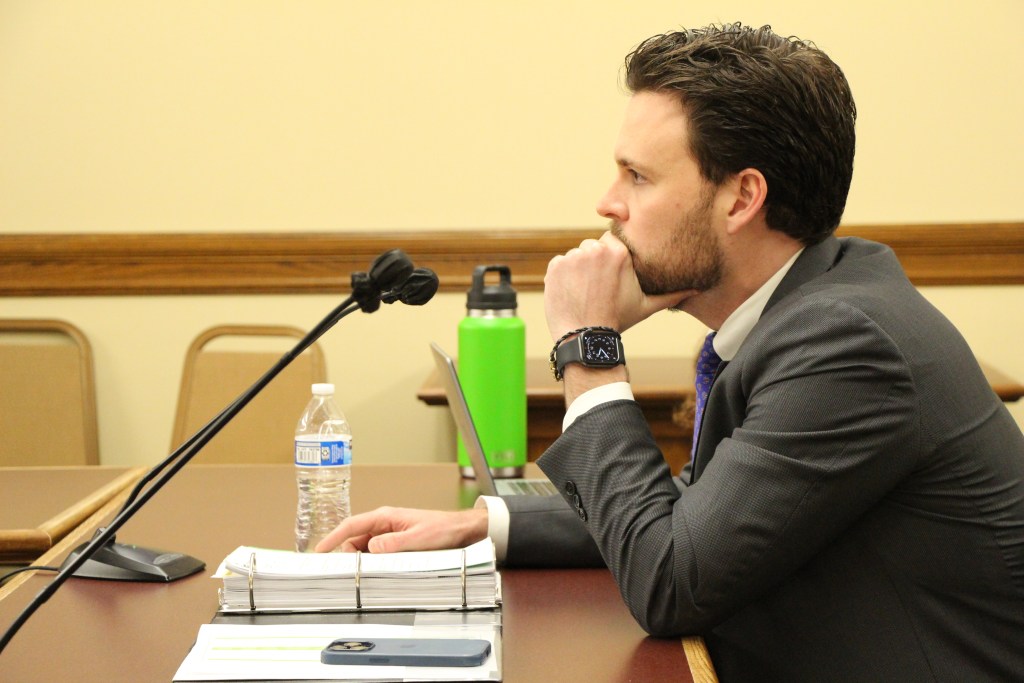As Montana’s multi-month review of Medicaid eligibility comes to a close, the state health department is disclosing more details about how many children, older adults and Native Americans have lost health coverage over the last year, and how the redetermination process has impacted specific counties.
The latest release of information came in response to a public records request filed in January by Democratic lawmakers. The minority party has repeatedly critiqued how the administration of Gov. Greg Gianforte has handled the state’s Medicaid “unwinding,” part of the nationwide reassessment sparked by the end of the pandemic-era public health emergency declaration. Federal authorities have also raised concerns about drops in childhood coverage and other parts of Montana’s redetermination process.
According to the state’s public dashboard, more than 127,000 people lost coverage between April and December, about 64% of whom were removed from the program because of a “failure to provide requested information.” About 30% lost coverage because they were determined ineligible. Roughly 100,000 had their coverage renewed over the same period, with tens of thousands of cases still pending.
Addressing state lawmakers this week during routine public hearings, state health department director Charlie Brereton said, as of last month, his agency has renewed about 44% of cases, ended coverage for about 40% of cases, and had roughly 16% of cases still pending.
“We’re working through those as quickly as possible,” Brereton said.
While the health department has continuously published figures about the number of people who have been disenrolled and general reasons for ending coverage, detailed demographic and county-level information has not been made public.

According to the figures from the state health department released to legislative Democrats on Tuesday, nearly 36,000 children lost Medicaid coverage since redeterminations began. Just under 50,000 children had their coverage renewed, and roughly 15,000 children had cases that were still pending. The department noted that complete data was not available for November, December and January.
The report did not include the total number of children enrolled in Medicaid programs over the same time, making it difficult to understand what percentage lost coverage, retained coverage or still had a pending case. Overall, Brereton told lawmakers on Wednesday that the department had renewed about 50% of children’s cases, disenrolled about 35% and was still processing another 15% of children’s cases.
The department’s response to state lawmakers also included county-level breakdowns of children who lost and maintained coverage, with some of the largest figures originating from the most populated localities.
In Flathead County, more than 4,000 children were removed from the public health program. Nearly 4,650 were renewed and another 2,330 remained pending. In Yellowstone County, home to Billings, about 5,550 children were disenrolled and another approximately 7,330 were renewed. Less than 2,000 cases were still pending.
The department’s release also began to illustrate the impact of Medicaid redetermination on Native American residents in Montana. Almost 12,800 children and adults with a tribal affiliation lost coverage while another 20,114 maintained coverage. Roughly 2,400 cases were still pending.
More than 7,600 adults over the age of 65 lost coverage, according to the report. Roughly 5,500 maintained coverage and approximately 5,600 are still awaiting determination.
In a written response to the records request, House Minority Leader Kim Abbott, D-Helena, called the disenrollment figures “a truly devastating result of a needlessly bureaucratic process.” Other Democratic lawmakers challenged Brereton during public meetings about long wait times on the state’s telephone helpline and raised anecdotal accounts of Montanans who have been stymied in their efforts to gain or keep coverage through the public health program.
“One is a foster care dad who works and has four children. I worked through the application with him. We sent it in, and then he got a denial notice,” said Rep. Mary Caferro, D-Helena, said. “I have no idea why. And I tried to get through on the helpline, but, he just gave up … He just said, ‘I don’t have time for this.’ And it’s his own health insurance.”
The department’s administrator of the Human and Community Services Division, Jessie Counts, said that her team is working to process existing and new applications as quickly and efficiently as possible. She said that the timeline for processing redeterminations is about 30 days, on average, while newly submitted applications take about 48 days to process.
Brereton encouraged lawmakers to call or email him directly when they hear from constituents who are having trouble with their redetermination process, pledging to give timely attention to those cases.
Republican Rep. Bob Keenan, R-Bigfork, who chairs the interim budget committee that discussed the issue Wednesday, said he’s found that level of open-door access to the department’s top brass helpful when trying to respond to constituent needs.
“We can work miracles for families, for people that are struggling,” Keenan said. “It’s been fantastic, from my perspective, to be able to represent the people and get things taken care of.”
Caferro, while indicating that she appreciated the department’s resources and responsiveness, pointed out a flaw in Keenan’s anecdote.
“It’s great, the people that make it to us,” she said, referring to lawmakers with direct access to the department. “It really is. It’s helpful. I’m worried about all the others that don’t.”
LATEST STORIES
What is a Supreme Court clerk, anyway?
PLUS: Who wants a special session?
Republican lawmakers mount three separate pushes for special sessions
A trio of special session requests from Republican lawmakers each touch on election-year issues, but lawmakers have historically had little success calling themselves into a special session.
What Montana’s candidates for governor have to say about renewing Medicaid expansion
We asked Republican, Democratic and Libertarian candidates if they would support reauthorizing the low-income health care program, which has in the past been the subject of vigorous debates in the Capitol — and is up for renewal again next year. Here’s what they had to say.

